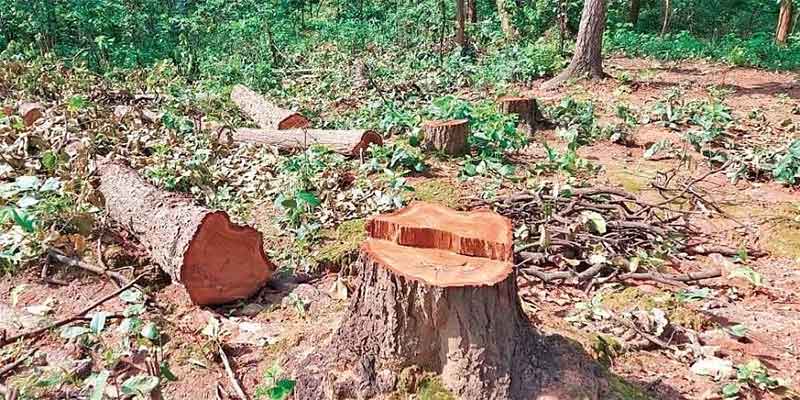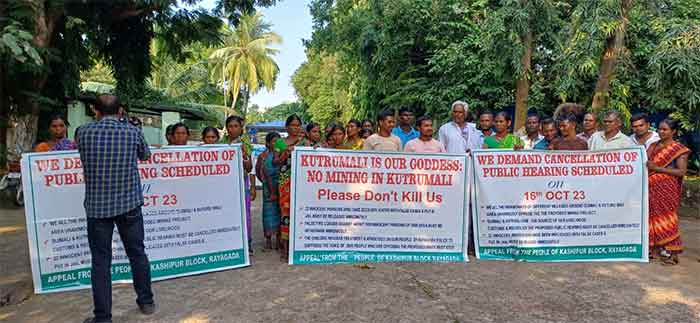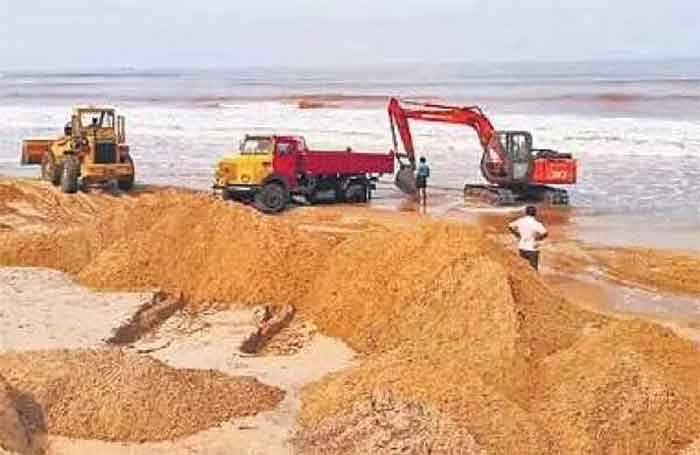
To
Ms Leena Nandan
Secretary
Ministry of Environment, Forests & Climate Change (MEFCC)
Govt of India
Dear Ms Nandan,
During the last few years and in the past, the Ministry of Mines and the Government of Odisha had allotted a large number of mine blocks to mining companies (coal, iron ore, bauxite, Limestone etc.) in areas that overlap the catchments of several major rivers that cater to downstream water requirements of agriculture and other activities in both Odisha and AP. More and more mining blocks continue to be allotted to mining companies, giving rise to large-scale mining activity that has led to a significant loss of forest cover and consequently a progressive reduction in water inflows that feed the rivers that originate from them. In this connection, I refer to an excellent research publication, “Mining impacts on forest cover change in a tropical forest using remote sensing and spatial information from 2001-2019: A case study of Odisha (India)” (authored by Manoranjan Mishra et al) published in January 2022 in Journal of Environmental Management (302(Part B): 114067 (https://www.researchgate.net/publication/356172517_Mining_impacts_on_forest_cover_change_in_a_tropical_forest_using_remote_sensing_and_spatial_information_from_2001-2019_A_case_study_of_Odisha_India) which has estimated the loss of forest cover resulting specifically from mining activity during 2001-2019. I have summarised below the District-wise loss in forest cover to the extent it significantly affects river catchments.
| District | Forest Cover (2000)sq km | Loss in forest cover sq km |
| Kandhamal | 2924 | 460 |
| Rayagada | 1420 | 262 |
| Kalahandi | 1053 | 243 |
| Gajapati | 1070 | 144 |
| Koraput | 691 | 136 |
| Keonjhar | 250 | 112 |
| Total | 7408 | 1307 |
In other words, out of a total forest cover of 7,406 sq km in six districts that primarily overlap with river catchments, the loss of forest cover was as much as 1,307 sq km (18%). The parts of Eastern Ghats that lie in these districts drain water into Indravati, Kolab, Rushikulya, Vamsadhara and Nagavali Rivers.
The paper further states
“The accumulated long-term results show that mining activities have caused severe changes in the landscape. The increase in mining activity is following the increase in production that began in 2016. When mining activities started to be underground in 2016, the impact rate on the forest within mining areas slowed down. However, we can highlight that deforestation may extend substantial distances, for instance, more than 10 km beyond lease boundaries due to the combined effects of land-use displacement, urban expansion, development of commodity supply chains and concerns over mine waste discharge and spills. This influence can bring diverse impacts to biodiversity and even cause changes in local climate”
I have tried to browse through the minutes of the EAC meetings held in MEFCC to understand how these mining projects are being apprised and whether their impact on river catchments is assessed. To my distress, EAC’s minutes rarely refer to river catchments.
For example, at its meeting held in July 2023, the EAC considered the environmental appraisal of the Sijimali bauxite mine recently handed over to a private company. The extent of the mine lease in the case of Sijimali is 1549 hectares and it leads to loss of forest cover of 700 hectares in Kalahandi and Rayagada districts in Odisha.
Apart from the project prima facie violating the two protective laws, PESA and FRA, applicable to a Scheduled Area in which the mine block is located, the loss of forest land in the two districts will adversely affect water inflows into Vamsadhara and Nagavali rivers which feed vast areas covered under agricultural activity in both Odisha and AP. Surprisingly, the EAC appears to have totally ignored the obvious fact that the said mining area overlaps a major river catchment, which shows how the MEFCC is routinely clearing major mining projects without any concern whatsoever for their long-term impact on water inflows into major rivers. In my view, this is a serious lapse in the way mining projects are cleared by your Ministry.
Had your Ministry consulted the Ministry of Water Resources and the Central Water Commission (CWC), they would have cautioned you to be circumspect in clearing such mining projects. Had your Ministry cared to consult the Ministry of Tribal Affairs and the National Commission for the Scheduled Tribes (NCST), as it ought to have, the latter would have pointed out the statutory violations involved.
In particular, mining in the hills directly impacts the water streams on which the local tribal communities critically depend. The way projects are apprised these days seems to ignore the interests of the tribals.
I feel that your Ministry needs to revamp the EIA procedure as otherwise rubber-stamp approvals granted for such mining projects, more to benefit promoters of mining companies than the society at large, will not only affect the interests of the tribal communities but also cause irreparable long-term damage to the scarce water resources of the country.
Loss of forest cover also leads to an irreversible loss of biodiversity, the economic value of which is far more than the perceived gains from mining. I suggest that your officers study an excellent evaluation of this aspect found in the well-known Dasgupta Review (The Economics of Biodiversity) commissioned by the UK government (https://www.gov.uk/government/publications/final-report-the-economics-of-biodiversity-the-dasgupta-review) to be able to understand this aspect adequately.
My suggestion is that all future EIA assessments should have as their primary component (i) an assessment of the impact of the project on (i) river catchments, and (ii) the biodiversity.
If MEFCC fails to act on the above lines, it will be committing grave contempt to the letter and the spirit of Article 48A of the Constitution that casts an inviolable obligation on your Ministry to protect the environment.
Regards,
Yours sincerely,
E A S Sarma
Former Secretary to the Government of India
Visakhapatnam
















































